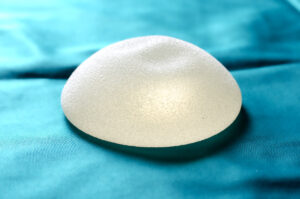 The latest Aesthetic Surgery Journal April 2022 had an article about how plastic surgeons are managing asymptomatic patients with textured breast implants.
The latest Aesthetic Surgery Journal April 2022 had an article about how plastic surgeons are managing asymptomatic patients with textured breast implants.
Quick recap:
In the article, “Management of Asymptomatic Patients with Textured Breast Implants: A Survey Analysis of Members of the Aesthetic Society,” They found 470 responses. 89% educate the patients. 11% recommended breast implant removal with variability in capsulectomy technique. When they educate the patients, if they recommend imaging, they do so with a MRI or ultrasound.
For those requesting surgery, 42% of surgeons educate the patients with clinical follow up and imaging. 57% recommend removing the implant and 30% recommend total capsulectomies.
In the next article, which was a discussion of this paper by another surgeon, I thought he made good points:
- The FDA and national societies are clear and consistent: prophylactic removal in an otherwise asymptomatic patients is not recommended due to the low risk of developing ALCL.
- Monitoring is the same recommendation for ALL implants
- There are widely held misconceptions:
-
- If a patient had textured implants, there is nothing known to mitigate risk. Textured implant patients have been reported to have ALCL years after the textured implant was removed, even when done with total or partial capsulectomy.
- Second, bacterial control at the time of textured implant insertion or removal has not been shown to affect or prevent ALCL.
- There are no current evidence based data to support total or near total capsulectomy, electrocautery scorch, chemical capsulectomy with betadine or caustic substance to decrease the future development of ALCL
- Capsulectomy is associated with an increased risk for chest wall injury and pneumothorax.
-
He concludes, “Before patients subject themselves to elective surgeries and commit to surgical fees which commonly exceed the cost of implantation, they should be aware that the efficacy of any risk mitigation procedure has not been established.”
He suggests you do total capsulectomy in an otherwise healthy patient if they are removing the textured device and the capsulectomy is easily performed and doesn’t add morbidity. What capsules are easy to remove? thickened capsule and/or subglandular implant placement. When the implant is against the ribcage in a submuscular position, it is for sure harder and has a higher complication rate.
If the implant has an abnormal capsule (thickened, calcified), has fluid, or has a mass, excise the abnormal portion of the capsule and have evaluated with pathology. CD30 immunhistochemistry can be done.
My thoughts?
ALCL is super rare. I almost never used textured implants, so this isn’t as big of a concern for my patients as it may be for some surgeons. ALCL almost always presents with seroma, a fluid collection. Even if you have a seroma, the chance it is ALCL is super low. So if you don’t have a seroma, chances are you don’t have ALCL. All groups tend to recommend not to do surgery unless you 1. want to remove your implants for another reason or 2. you have a seroma. In asymptomatic breasts, the recommendation is to leave it alone.
I agree with the reviewer’s comments re: capsulectomy. I see some doctors who prey on the fear of patients, and the dark web and breast implant illness and chat rooms all combine to make patients come in with fear of ALCL cancer, and they request en bloc capsulectomy.
In my office I have a slideshow I show to patients which illustrates how different capsules can look. When you have a super thin translucent capsule, it is not a mad capsule. I strongly doubt that a translucent capsule would ever form ALCL, and in trying to remove that capsule off the underlying ribcage, your risk of bleeding, chronic pain from removing the rib periosteum, or dropping the lung with a pneumothorax is higher. Not worth it, particularly since it has not been shown to affect ALCL.
If someone has a pathologic capsule- thick, calcified, distorted- those are easier to remove, and frequently we can remove the whole thing. If it is easy to remove the whole capsule, in my practice, that is always my preference.
We always send the capsule to pathology regardless of how it looks for analysis.
Let science, numbers, and experience guide us. Not fear, which is often whipped up by the media or partial evaluations of an issue.
The information provided on this website is for general informational purposes only and does not constitute medical advice, diagnosis, or treatment. Always seek the advice of a qualified healthcare provider for any questions regarding your health or medical condition.
